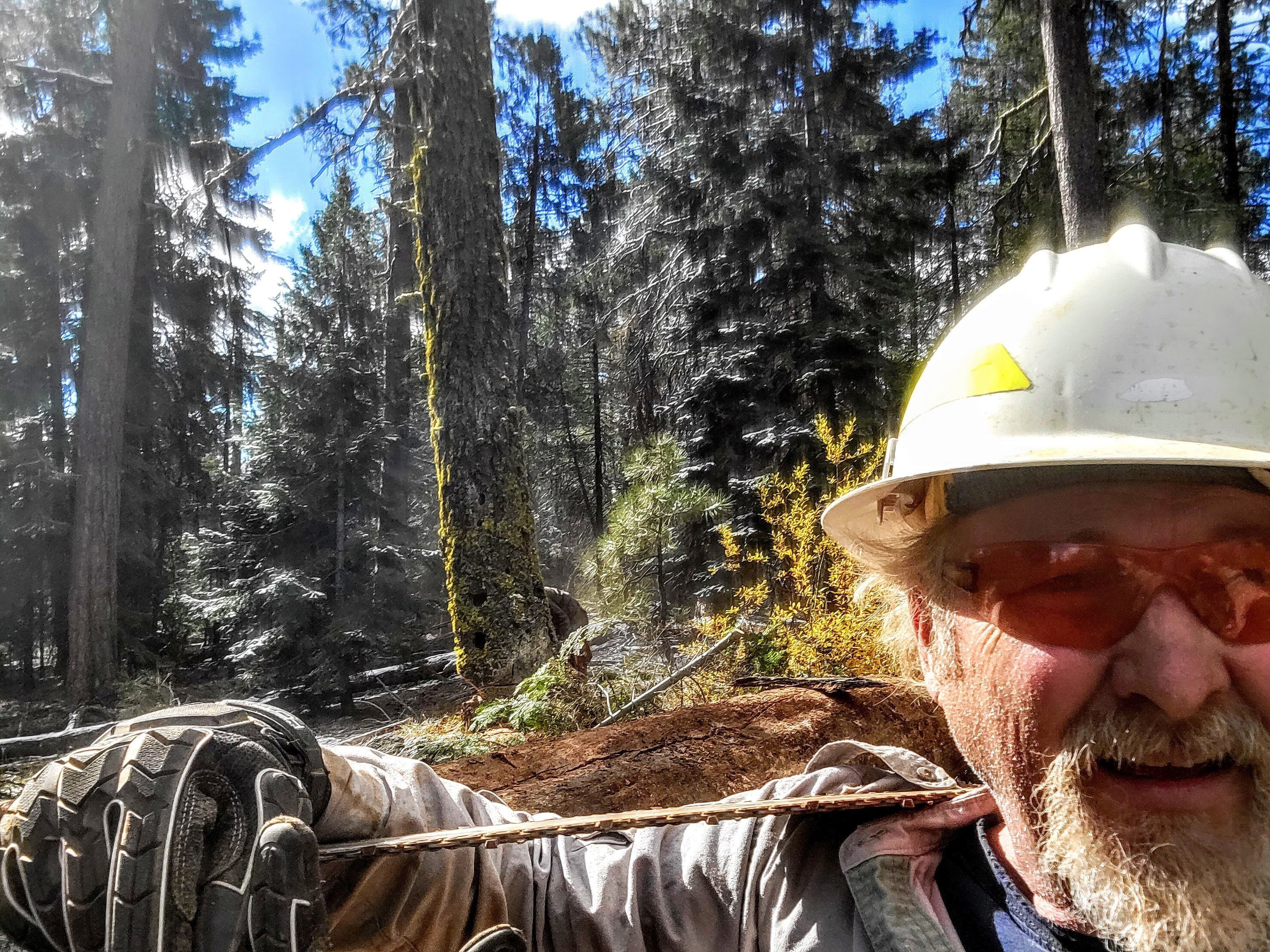Dave Hannibal, Base Manager Grayback Forestry

In 1980 Dave Hannibal was busy as a tree climber picking cones for seed production used in nurseries for growing trees to replant. It turns out that was the early days of forest restoration and Dave "found myself as a part owner in Cedar Mountain Forestry which was a worker owned cooperative in Southern Oregon". Now more than 40 years later Dave is still involved with the same work but on a much larger scale with Grayback Forestry as forest restoration work has grown and changed. "I started in the fall of 1980 as a tree climber, picking cones, which turned out to be the tip of the iceberg of the reforestation business. Those early years were done in worker-owned-cooperatives. We did a lot of tree planting, thinning, and other restoration work in the clear-cuts of Southern Oregon. In 1986 I met Mike Wheelock and joined Grayback Forestry, we did much of the same things but added a lot more prescribed fire and wildfire suppression. In 1993 we expanded and opened a base in Prairie City and I relocated to John Day the following year, I have been the Base Manager here since." A Base Manager is responsible for all functions of the base including: hiring and training employees, managing and maintaining associated contracts and daily workloads as well as vehicles and other equipment like chainsaws.
In the 40+ years that Dave has been doing this work, a lot has changed. "The biggest change is more managers are starting to see the forest for much more than timber production and a renewed reliance on science to build a healthy forest ecosystem while maintaining business and community infrastructure. I have watched fire suppression grow into an industry of its own. In the early and mid 1980s there were only a handful of us and we mostly hired on as 'administratively determined aka a temporary employee' with the Oregon Department of Forestry for wildfire work. "Maintaining meaningful long term employment has always been a challenge in this industry so accelerated forest restoration has been a welcomed change and helps set the stage for long-term contracts and better stability. Treatments over larger landscapes also make it feel more meaningful to those performing the work."
"The huge growth in contracted wildfire resources has certainly been a noticeable change since the mid 80s when there were only a handful of us. We have come to be highly relied on by the agencies and this work has helped keep us in business to be able to rise to the level needed to accomplish the accelerated pace of restoration work we do today."
The 2021 fire season was another busy one. Dave managed over 85 firefighters on assignments throughout the west. "My summer was a new record setting effort in fire suppression as I was very busy with 3 twenty person crews, 5 engines and a tender that were kept busy. We had 87 employees between our John Day and Seneca offices for the summer and could have used another half dozen if we could have found them as we did have a few pieces of equipment sitting idle. Employees willing to work as hard as we ask them to are hard to find and there are many positions that require experience that you just cannot build in a short time frame. Besides the huge effort to get caught up on our contractual obligations for non fire work we also worked on the most difficult prescribed fire in my career this fall and I could not be more proud of my troops for their professionalism and efforts."
"Once they are out I spend time supporting the crews in the field, planning future work and how to meet contractual deadlines, bidding solicitations that pop up on short notice, making sure vehicles get repaired and maintenance during off times, and overseeing hiring and training for new recruits. I am fortunate to have some very competent office and shop staff to support all this. I have also been doing some drone work to help enhance my collaborative efforts, I have laid out autonomous drone flights over half a dozen future projects where the drone will capture the exact same photo points each time the unit is flown, the photos and video will show before, after, and several years in the future to help monitor, evaluate and document our restoration on the forest."
With Dave's experience working in northwest forests he provides valuable perspective to the Harney County Forest Restoration Collaborative of which he is an active participant including the drone flight work he mentions above. "I try to help fill a niche representing the service contracting industry and what I have learned in my 40 years working in the forests of the Northwest. I stay connected because I believe in the mission, there is much yet to do and collaboration is a slow and winding road. The planning we do today is far better than past efforts but there are still advancements to be had. Currently, I am interested in treatment size and unit layout within future planning projects, but we need to keep our eyes on evolving science and be willing to make adjustments."

